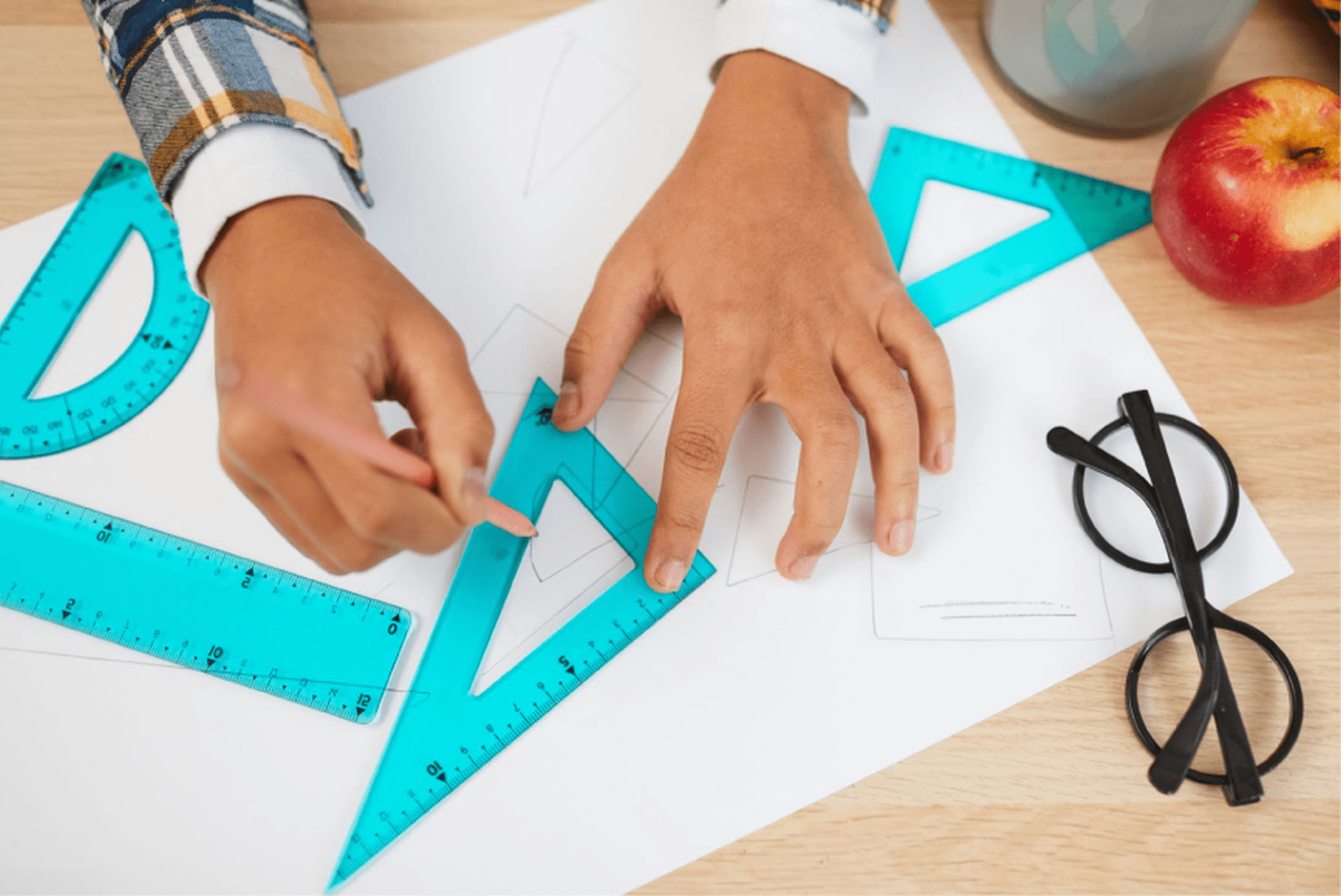Geometry can be a challenging subject for teenagers, but with the right approach, it can be both engaging and understandable. Here are some practical tips for teachers and parents to help make geometry more accessible and enjoyable for teens.
Connect Geometry to Real-Life Situations
1. Use Practical Examples. Relate geometric concepts to real-world situations that interest teens. For example, discuss how geometry is used in video game design, architecture, or sports. Showing how geometric principles apply to things they care about can make the subject more relevant.
2. Incorporate Technology. Utilize apps and online tools that offer interactive geometry exercises. Many educational platforms provide virtual manipulatives and simulations that can help teens visualize and experiment with geometric concepts.
Make Learning Interactive
1. Hands-On Activities. Engage teens with projects that involve building models or using geometric tools like compasses and protractors. Activities such as creating 3D shapes from nets or designing geometric patterns can make abstract concepts more concrete.
2. Gamify Learning. Turn geometry lessons into games or challenges. Use puzzles, quizzes, and competitive activities to make learning fun. There are many educational games that incorporate geometric thinking and problem-solving skills.
Break Down Complex Concepts
1. Simplify Explanations. Start with basic concepts and gradually introduce more complex ideas. Use clear and simple language to explain terms and properties, and build on what they already know.
2. Use Visual Aids. Visual aids such as diagrams, charts, and videos can help teens understand geometric concepts better. Draw figures, use color coding, and employ visual examples to clarify abstract ideas.
Encourage Problem-Solving
1. Practice with Real Problems. Provide real-world problems and scenarios that require geometric reasoning. For example, have them calculate the area of a garden, design a room layout, or solve architectural challenges.
2. Foster Critical Thinking. Encourage teens to explore different methods for solving geometric problems. Discuss various strategies and solutions, and help them understand why certain approaches work better than others.
Provide Support and Encouragement
1. Offer Positive Reinforcement. Acknowledge their efforts and progress. Positive feedback and encouragement can boost their confidence and motivation to tackle challenging concepts.
2. Be Patient and Available. Make yourself available for questions and provide extra help when needed. Be patient and understanding if they struggle with certain topics, and offer guidance and support to help them overcome difficulties.
Create a Supportive Learning Environment
1. Promote Collaboration. Encourage group work and collaborative projects. Working with peers can help teens learn from each other and gain different perspectives on geometric problems.
2. Integrate Geometry into Daily Life. Look for opportunities to incorporate geometry into everyday activities. For example, while cooking, discuss measurements and geometric shapes of ingredients. While shopping, explore concepts like area and volume in practical contexts.
Utilize Resources and Tools
1. Educational Websites and Apps. Leverage online resources such as Khan Academy, GeoGebra, or other educational websites that offer interactive lessons and exercises.
2. Geometry Kits and Tools. Invest in geometry kits that include tools like rulers, compasses, and protractors. Hands-on tools can help teens practice geometric constructions and measurements.
Conclusion
Teaching geometry to teens can be both rewarding and challenging. By connecting geometric concepts to real-life situations, using interactive and hands-on methods, breaking down complex ideas, and providing support, teachers and parents can make geometry more accessible and engaging. Encouraging problem-solving and creating a supportive learning environment will help teens develop a deeper understanding and appreciation for geometry.





